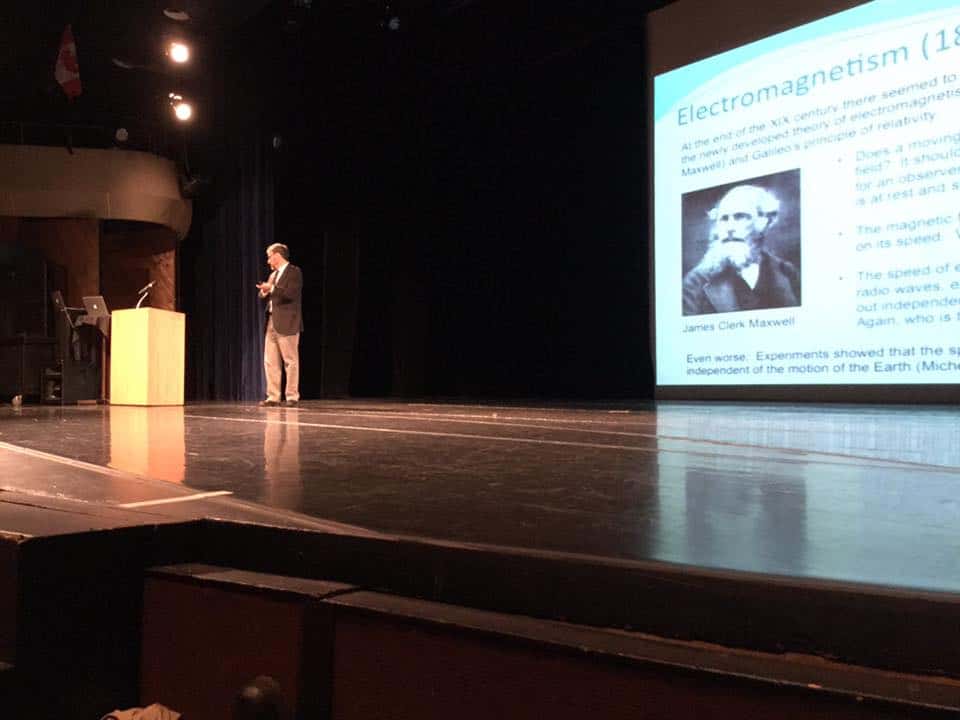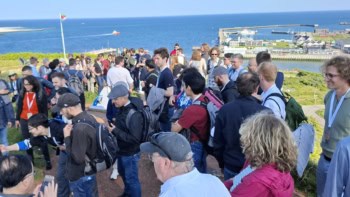
By Hamish Johnston at the CAP Congress in Edmonton, Canada
The first day of the Canadian Association of Physicists (CAP) Congress at the University of Edmonton closed yesterday on the theme of time travel. Surely that is science fiction, you are thinking? But Miguel Alcubierre of the National Autonomous University of Mexico (UNAM) wasn’t joking when he delivered the Herzberg Memorial Lecture yesterday evening (although he did giggle a lot during his talk, which was very endearing). The session was called “Faster than the speed of light” and it was a fascinating romp through some of the more bizarre implications of Einstein’s general theory of relativity (GR) – which is 100 years old this year.
He spoke about the “Alcubierre drive”, which he first postulated in 1994 as a way of travelling faster than the speed of light within a “warp bubble” in space without violating GR. What’s the catch? You need vast amounts of negative energy, which you are not going to find at your local filling station.
There was a reception after the talk and I caught up with physicists from the University of Calgary, including Rachid Ouyed, who is founder of the Quark Nova Project. Over beer and samosas, he explained how some supernovae could occur in a two-step process. The first step is the conventional supernova explosion of a star that leaves behind a neutron star. Then, Ouyed argues, a second explosion occurs during which the neutron star is transformed into a quark star. This happens because the neutron star continues to collapse until the quarks are liberated from their neutrons, thus creating a new phase of matter and giving off a tremendous amount of energy. What is left behind is an incredibly dense “quark star”.
In his talk yesterday afternoon, Ouyed discussed observational evidence for quark novae. He also made the tantalizing suggestion that if some of the Type 1a supernovae used to measure distance in the universe are quark novae, then the evidence for the accelerating expansion of the universe is considerably weaker. Move over dark energy, here come the quark novae.
There is more on quark novae in the video below.



